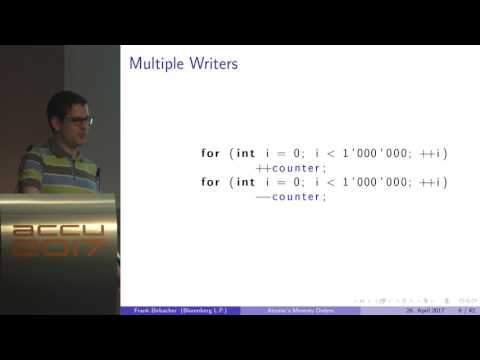By Frank Birbacher
Multithreading in C++ has been used successfully for many years prior to the introduction of C++11 to run programs on multi-core hardware. Then the C++11 Memory Model for multithreading was introduced with much debate as to its proper application. On the one hand some suggest not to bother with atomics and just use volatile if at all. On the other hand some might be happy to have everything guarded with mutexes. Either side may have been discouraged from looking deeper into the C++11 Memory Model, put off by its apparent complexity.
The talk will focus on different options of “memory order” when using std::atomic. It’ll explain what the memory order is and what each of the options mean. We’ll take a look at the C++ memory model, sequencing of expressions and synchronization between threads. The talk sheds light on compiler optimizations and generated assembly, examines out-of-order execution in CPUs and possible cache communication between cores. In the end it should be clear what an atomic variable does apart from storing a value.












